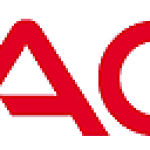- Branche: Software
- Number of terms: 11119
- Number of blossaries: 0
- Company Profile:
Oracle Corporation, an enterprise software company, engages in the development, manufacture, distribution, servicing, and marketing of database, middleware, and application software worldwide.
Text files used by the Locale Builder to define locale-specific data. Because they are in text, you can view the contents.
Industry:Software
A GUI utility that offers a way to view, modify, or define locale-specific data. You can also create your own formats for language, territory, character set, and linguistic sort.
Industry:Software
A character used during character conversion when the source character is not available in the target character set. For example, ? is often used as Oracle's default replacement character.
Industry:Software
Multilingual support that is restricted to a group of related languages.Western European languages can be represented with ISO 8859-1, for example. If multilingual support is restricted, then Thai could not be added to the group.
Industry:Software
One byte. One byte usually consists of 8 bits. When character codes are assigned to all characters for a specific language, one byte (8 bits) can represent 256 different characters.
Industry:Software
A single-byte character is a character whose character code consists of one byte under a specific character encoding scheme. Note that the same character may have different character codes under different encoding schemes. Oracle cannot tell which character is a single-byte character without knowing which encoding scheme is being used. For example, the euro currency symbol is one byte in the WE8MSWIN1252 encoded character set, two bytes in AL16UTF16, and three bytes in UTF8.
Industry:Software
A single-byte character string is a character string that consists of one of the following: No character (called a null string) One or more single-byte characters supplementary characters The first version of Unicode was a 16-bit, fixed-width encoding that used two bytes to encode each character. This allowed 65,536 characters to be represented. However, more characters need to be supported because of the large number of Asian ideograms. Unicode 3.1 defines supplementary characters to meet this need. It uses two 16-bit code units (also known as surrogate pairs) to represent a single character. This allows an additional 1,048,576 characters to be defined. The Unicode 3.1 standard added the first group of 44,944 supplementary characters.
Industry:Software
